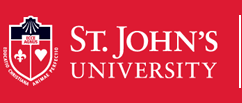ORCID
https://orcid.org/0000-0002-1908-0683
Date of Award
2025
Document Type
Dissertation
Degree Name
Pharmaceutical Sciences (Ph.D.)
Department
Pharmaceutical Sciences
First Advisor
Ketankumar D Patel
Second Advisor
Abu T Serajuddin
Third Advisor
Zhe-Sheng Chen
Abstract
Biovariability poses a significant challenge in the oral administration of sotorasib, an FDA-approved KRAS G12C inhibitor for non-small cell lung cancer (NSCLC). Sotorasib, weakly basic nature, limited aqueous and pH-dependent solubility, necessitates a high daily dose (960 mg; 8 tablets), impacting patient compliance and therapeutic outcomes. Co-administration with acid-reducing medications (PPIs), commonly used by cancer patients, significantly reduces maximum concentration (Cmax) and area under the curve (AUClast), hindering absorption. To address these limitations, we developed a pH-independent nanocrystalline formulation through wet media milling, aiming to achieve a stable formulation with enhanced bioavailability, improved redispersibility, and minimized fasted/fed variability. The nanosuspension, achieved a high drug load (45% w/w) with uniformly distributed nanocrystals (173 ± 21.54 nm) and a stable negative zeta potential (-36.0 ± 0.57 mV). Cryoprotectants hydroxypropyl-β-cyclodextrin (HPβ-CD) and trehalose were effective in preventing aggregation, ensuring excellent redispersibility across pH conditions in both simulated gastric (pH 4.0) and intestinal (pH 6.8) environments. In vitro dissolution studies demonstrated > 95% drug release within 5 minutes at both pH levels, indicating rapid dissolution and robust stability. Solid State Characterization studies, including X-ray diffraction (XRPD), differential scanning calorimetry (DSC), scanning electron microscopy (SEM), and cryo-TEM, confirmed the preserved crystallinity, reduced particle size, and improved homogeneity. Additionally, BET surface area analysis indicated an increased surface area for the lyophilized nanosuspension, supporting enhanced dissolution. Evaluated in a novel continuous dissolution-permeation assembly mimicking in vivo conditions, the nanosuspension demonstrated a significantly improved dissolution and permeability profile, capturing the shift from dissolution rate-limited to permeation rate-limited absorption. In vivo pharmacokinetic studies in animal models revealed superior systemic exposure, with a significant increase in Cmax (3529 ± 564.57 ng/mL) compared to the physical mixture. These findings suggest that the sotorasib nanosuspension, designed to address biovariability and reduce dosing frequency, holds potential to substantially improve therapeutic outcomes for NSCLC patients.
Recommended Citation
Patel, Henis J., "FORMULATION STRATEGIES TO IMPROVE BIOAVAILABILITY AND ORAL ABSORPTION OF SOTORASIB (AMG 510)" (2025). Theses and Dissertations. 899.
https://scholar.stjohns.edu/theses_dissertations/899
